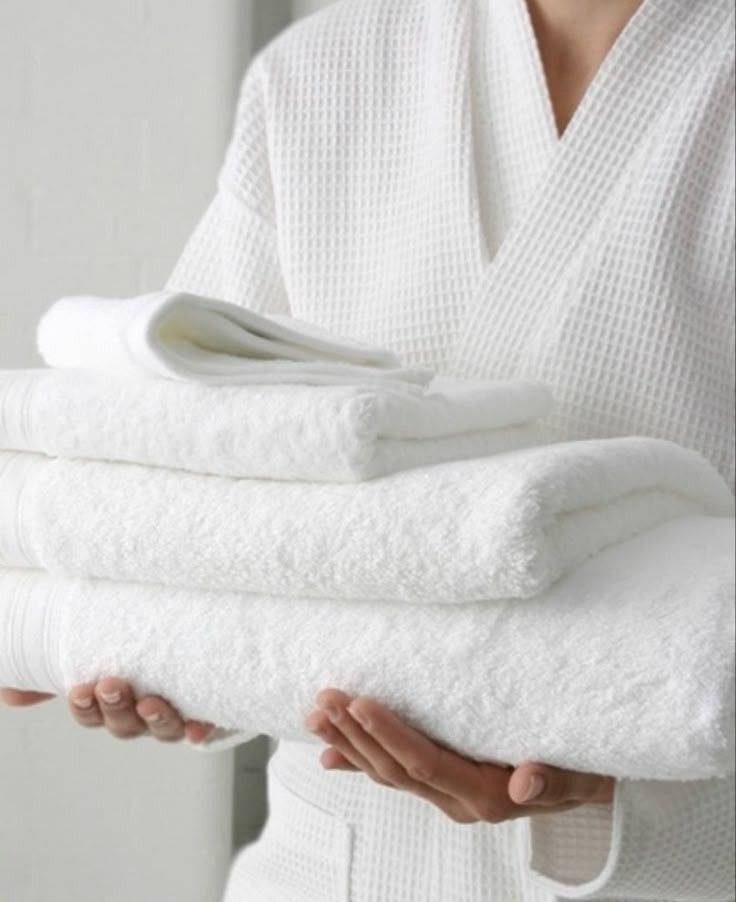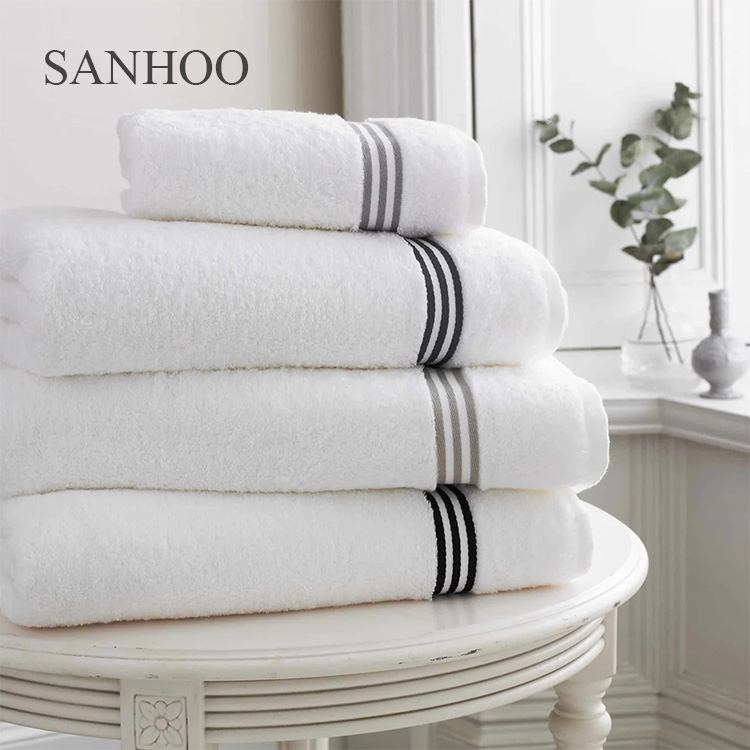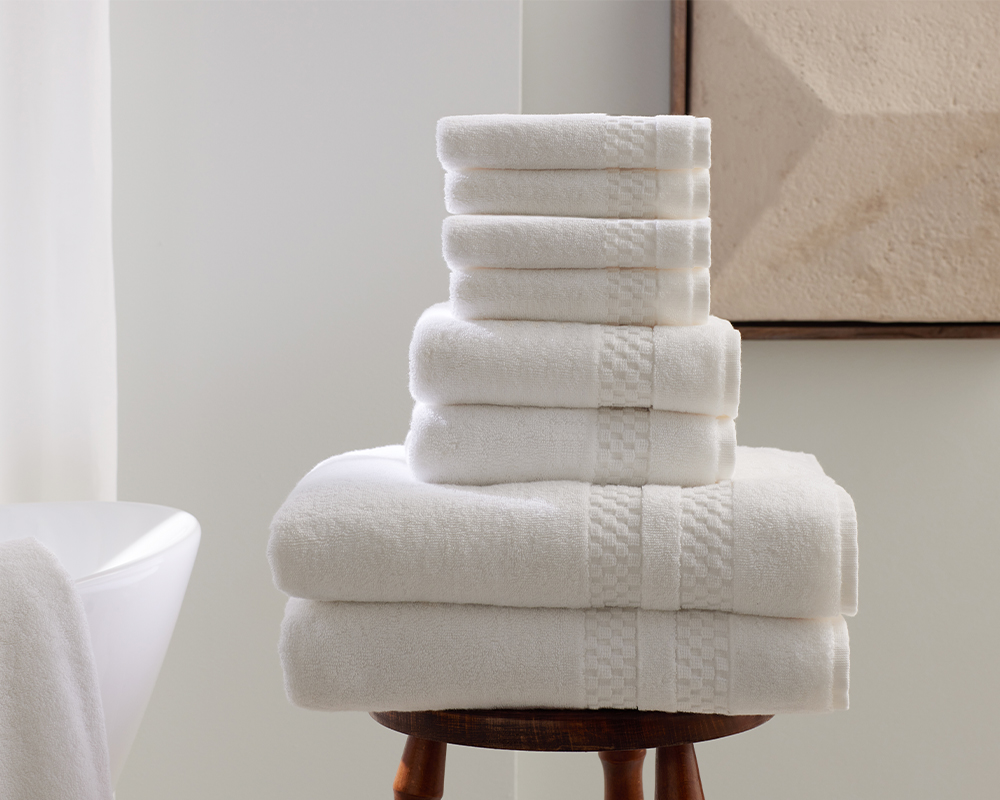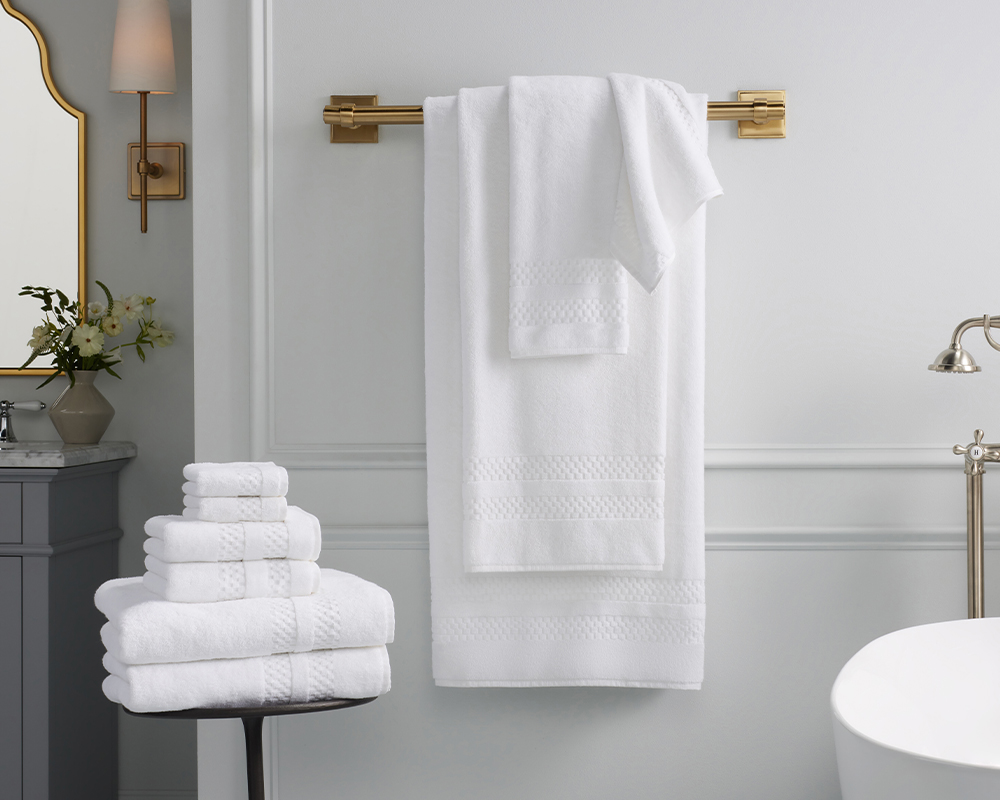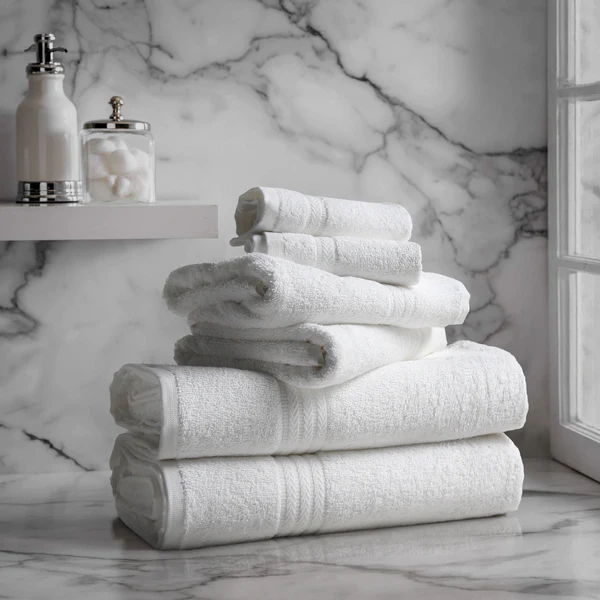In the hotel experience, few things are as comforting after a refreshing shower as a thick, soft, and highly absorbent towel. This seemingly simple product is, in fact, a sophisticated item born from the fusion of material science, textile engineering, and ergonomics. It is not merely a functional object but a symbol of quality. This article delves into the microscopic world of towels, systematically analyzing the comprehensive knowledge behind them—from raw materials to long-term care—to present a complete encyclopedia of towel knowledge.
Chapter 1: The Origin of Quality – Exploring the Mystery of Fibers
The quality of a towel is rooted in its fibers. Different materials define the fundamental character of the towel.
1.1 The Kingdom of Cotton: Not All Cottons Are Created Equal
Cotton is the primary raw material for towels, but the variety and processing of the cotton directly create a hierarchy in towel qualit
Standard Cotton: Features shorter fibers and average strength. Towels made from it tend to have a rougher hand feel, are prone to pilling and linting, and are less durable. Typically used for low-end or disposable products.
Combed Cotton: This is the baseline for quality towels. During the spinning process, a combing machine removes shorter fibers and impurities, leaving only the long,整齐的棉纤维. This results in smoother, stronger yarn. Consequently, combed cotton towels offer significant advantages: less linting, reduced pilling, a better sheen, and improved durability.
Long-Staple Cotton: This category sits at the pinnacle of cotton quality. The fiber length is typically over 35 millimeters, about one-third longer than standard cotton. Longer fibers mean:
Greater Tensile Strength: The yarn is less prone to breaking, making the towel more durable.
Fewer Fiber Ends: The fabric surface is smoother, with a silk-like luster and an exceptionally soft hand feel.
Higher Breathability: Fibers can be tightly woven without excessive twisting, retaining more air pockets for excellent Breathability.
Well-known types like Egyptian Cotton (Giza series), Supima Cotton, and Xinjiang Long-Staple Cotton belong to this group. They are the preferred choice for luxury hotels to showcase their quality.
1.2 The Rise of Organic Cotton and New Eco-Friendly Materials
With the deepening of sustainable practices, Organic Cotton and Recycled Fibers are becoming significant trends.
Organic Cotton: Grown under strict protocols that prohibit synthetic pesticides, fertilizers, and genetically modified organisms. It is more environmentally friendly and, due to minimal chemical residues, is particularly suitable for babies and individuals with sensitive skin.
Recycled Fibers/ECO Cotton: Textile fibers made from recycled materials like plastic bottles (e.g., rPET). These materials give towels an eco-conscious narrative, serving as an effective medium for hotels to communicate their environmental values.
Chapter 2: The Art of Structure – Weaving Techniques and Core Parameters
If the material is the “flesh and blood” of a towel, then the weaving工艺 and structural parameters are its “skeleton.”
2.1 The Core Trio: GSM, Yarn Count, and Density
These three parameters are the most objective industrial standards for measuring towel quality.
GSM (Grams per Square Meter): This is the most direct indicator of a towel’s thickness, plushness, and insulating properties.
400-500 GSM: Standard grade. Offers a moderate hand feel and quick drying time, balancing comfort and practicality. Common in mid-range hotels.
500-600 GSM: Premium grade. Provides a noticeably thick, plush feel with a strong sense of wrap. It has a satisfying weight when wet and is the mainstream choice for high-end hotels.
600+ GSM: Luxury grade. Possesses a blanket-like texture, offering ultimate softness and a warm touch. However, the associated laundering and drying costs are also higher.
Note: Higher GSM is not infinitely better; excessively high GSM can reduce breathability and make the towel difficult to dry.
Yarn Count and Density:
Yarn Count: Refers to the length of yarn per unit of weight (where 840 yards is one unit). A higher “count” indicates a finer yarn. Common counts for hotel towels include 16s, 21s, and 32s. Higher count yarns produce finer, lighter fabrics. However, for bath towels seeking absorbency and bulk, medium-count yarns (like 21s) often create fuller loops, achieving a perfect balance of softness and absorbency.
Density: Refers to the number of warp and weft yarns per unit area. Higher density means a tighter towel structure, where the loops are less likely to be snagged. This enhances the towel’s durability, water absorption/retention capacity, and reduces shrinkage.
2.2 Weaving工艺: The Ever-Changing World of Loops
The final hand feel of a towel is presented on its surface through weaving techniques.
Standard Terry Weave: The most basic weave. The warp yarns form loops that cover the surface. The height and density of these loops directly determine the towel’s absorbency and softness. Higher, denser loops result in better water absorption and retention.
Jacquard and Embroidery:
Jacquard: Patterns or logos are woven directly into the fabric during the manufacturing process by complex intertwinings of warp and weft yarns. This is a permanent, “woven-in” design that will not wear off.
Embroidery: Patterns are stitched onto the finished towel using an embroidery machine. The effect is three-dimensional and refined, but the cost is higher, and there is a risk of thread unraveling if the thread quality is poor or washing is improper.
Chapter 3: The Performance Crucible – Scientific Testing and Standards
Hotel towels endure harsh industrial laundering, so their performance must be validated through scientific testing.
1. Absorbency Testing:
This is the core functional test for towels. Professional tests involve dripping a specific volume of water onto a flat towel surface and measuring the time taken for complete penetration. National or hotel industry standards often require this to be under 10 seconds, while premium towels can achieve “instant absorption.” It is worth noting that all-cotton towels untreated with chemical softeners have the best absorbency due to the natural hollow structure of cotton fibers.
2. Durability Testing:
Tear Strength Test: Uses a specialized instrument to measure the force required to tear a specific length of fabric. This reflects the towel’s ability to resist damage during daily use.
Abrasion Resistance Test: Simulates laundering and friction under standard conditions, evaluating the towel’s pilling and thinning after a certain number of rubs. This is key to predicting the towel’s lifespan.
Wash Stability Test: Simulates industrial laundering (often 50, 100, or more cycles), testing the towel’s dimensional change, GSM loss, color fading, and appearance after washing.
3. Colorfastness Testing:
Wash Colorfastness: Tests whether the towel bleeds or stains other fabrics during washing.
Rub Colorfastness: Uses a crockmeter to test color loss under dry and wet conditions.
Light Colorfastness: Tests the towel’s resistance to fading under prolonged light exposure, which is especially important for towels near windows.
Chapter 4: The Lifecycle – Professional Use and Maintenance Philosophy
Proper care is the key to maintaining towel performance and extending its service life.
1. “Activating” the First Use:
During the manufacturing process, there can be natural cotton wax and loose fibers on the surface of the fibers. Therefore, washing with clear water before the first use is crucial. This step removes lint and “activates” the cotton fibers, bringing them to their optimal absorbent state.
2. The Right and Wrong of Daily Laundering:
The Fabric Softener Trap: This is the biggest misconception in towel care. Fabric softeners work by depositing a cationic surfactant layer on the fiber surface to create softness and smoothness. However, this film severely clogs the pores of the cotton fibers, dramatically reducing absorbency. With long-term use, towels become slick but non-absorbent. It is recommended to avoid or minimize the use of fabric softeners.
Water Temperature Control: Warm water between 30°C and 60°C is ideal. Excessively hot water can damage cotton fibers, accelerating aging and hardening.
Detergent Choice: Use neutral or weakly alkaline detergents and avoid bleach, which can damage fibers and cause fading.
Thorough Rinsing and Prompt Drying: Ensure no detergent residue remains. Towels should be tumble-dried or air-dried immediately after washing. Allowing them to sit damp promotes bacterial growth and leads to a persistent, sour mildew odor.
3. Performance Restoration and Revitalization:
When towels become stiff or less absorbent due to water hardness or occasional softener use, try these methods:
Alkaline Water Boiling Method: Boil towels in a large pot of water with a small amount of washing soda or baking soda for about 10 minutes, then rinse thoroughly. This effectively breaks down grease and residues.
White Vinegar Soak Method: Soak towels in a mixture of warm water and white vinegar (approx. 4:1 ratio) for about an hour, then proceed with a normal wash. The acidity of the vinegar can neutralize alkaline detergent residue and mineral deposits, restoring the fibers’ absorbency.
Conclusion
The perfect hotel towel is a crystalization of science, craftsmanship, and care. From a plant in a cotton field to a daily essential that offers guests warmth and comfort, it embodies a profound body of knowledge. Understanding this knowledge is not only essential for making more professional procurement decisions but also for truly appreciating how to use such a detail to convey an impeccable promise of quality and human-centric care to guests. For true luxury is embodied in every tangible detail.
Post time: Oct-09-2025
